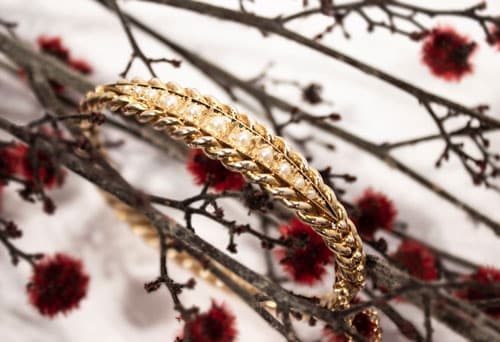
This list is by no means comprehensive, however it has been kept as a simple A to Z format for 2 reasons.
Firstly it is easy to read and jump quickly to a desired letter, and secondly it follows the KISS principle of Keep It Simple Stupid! I didn't want this to be a long, drawn out and technical article that would have trouble keeping you reading all the way to the end.
A is for Analog (Analogue): A display of time by reading the hands in relation to fixed numbers, indicators or markers on the dial.
B is for Balance wheel: Invented in the 14th Century, it is the wheel that is used to regulate the rate of movement in a watch. It is a wheel that is driven by the escapement and rotates back and forth.
C is for Chronometer: A highly accurate instrument (such as a watch) that passes all the requirements as set out by the Swiss organization the COSC which stands for Controle Officiel Suisse des Chronometres. It must remain accurate over a 15 day period in different positions and temperatures.
D is for digital (display): A watch that will display the time in numbers by use of a LCD (Liquid Crystal Display) or LED (Light Emitting Diode)
E is for Escapement: First appearing in 1779, this part of the watch is used to control the motion of the escape wheel to regulate the time into equal and regular parts.
F is for frequency: The number of vibrations (half-oscillations) per second and is measured in hertz (Hz).
G is for GMT: Greenwich Mean Time is an absolute time reference and does not change with the seasons. Named at the point in Greenwich England as decided in 1884.
H is for Horology: The study and measurement of time.
I is for Incabloc: Invented in 1934, Incabloc is the trade name for a shock protecting system used to protect the balance wheel from shock such as in the event a watch is dropped.
J is for Jewels: A small natural or synthetic gem (Usually synthetic ruby) used as a bearing in a watch.
K is for Kinetic: Kinetic energy is one that powers a watch solely by the movement of your wrist.
L is for lugs: At each end of the watch is the lugs used to hold the pins that will hold the bracelet/watch band.
M is for manual (winding): A watch movement that is hand wound to wind the mainspring to power the watch.
N is for Nivarox: Is the name of a special antimagnetic steel alloy used for modern balance springs. It is able to self compensate for the effects of temperature - expansion and contraction, and is also very strong and corrosion resistant.
O is for Oyster (watch case): Invented by Rolex in 1926, the Oyster case was a breakthrough in horology by producing the first truly waterproof watch.
P is for Perpetual: A perpetual rotor (also known as an automatic watch) is one that has a rotor that rotates freely inside the watch case that winds the mainspring via a ratchet type mechanism.
Q is for Quartz (power): This is for a watch whose power comes from an oscillating quartz crystal which draws its power from a battery. The current passes through a magnetic coil to a (synthetic) quartz crystal, which vibrates at a very high frequency - an incredible 32,768 times a second, resulting in very accurate timekeeping.
R is for Repeater: A wonderful function originally designed for pocket (fob) watches that allowed the user to push (or slide) a button resulting in the time piece chiming the time. There are three styles: quarter repeater, 5 minute repeater and the most complicated, the minute repeater.
S is for Sapphire crystal: Synthetic sapphire is used as the "glass" on the watch. With a hardness of 9 on Moh's scale of hardness (second in hardness only to diamond at 10), it has become the choice of material on nearly all watches today.
T is for Tachymeter: A tachymeter is a scale on the dial or bezel on a chronograph watch that when used with the second hand (timing hand) takes a value which can then be converted into miles or kilometers per hour.
U is for Unidirectional bezel: An outer bezel that like the name implies can only be rotated in one direction, and is generally used as a timing device.
V is for VPH (Vibrations Per Hour): The balance wheel is able to rotate back and forth on its own axis acting as the ruling component of the movements escapement. The amplitude (usually about 300 degrees) is restricted by the balance spring, which also provides the reversing of the direction of rotation. The frequency of the alternating vibration is measured either in vibrations per hour (vph) or Hertz (Hz). Early watches had a frequency of 18,000 vph (2.5 Hz). After the 1950's, higher frequencies were adopted to produce a lower percentage of irregularities to the rate. Today's watches usually have a frequency of 28,800 vph (4 Hz), allowing a watch to maintain a good precision and less lubrication problems than extremely high frequencies, such as 36,000 vph (5 Hz).
W is for Waterproof: No such thing.....infact the term "waterproof" is an incorrect term to use on any watch. However water resistant is altogether different. Water resistant is used to describe the level of protection a watch has from water damage. Water-resistant on the case back of a watch means that it can handle light moisture, such as a rain, but not swimming or diving. If the watch is made to be submerged in water, it must state at what depth it maintains water-resistance, e.g 50 meters (165 feet) or more on most sport watches. Below 200 meters, the watch may be used for scuba diving.
X is for 10: Roman numerals for 10 as found on a watch or more commonly a pocket watch dial with Roman numerals.
Y is for why: Why is it so hard to find a watch term starting with this letter!
Z is for Zulu time: Zulu time is simply another term for GMT.






